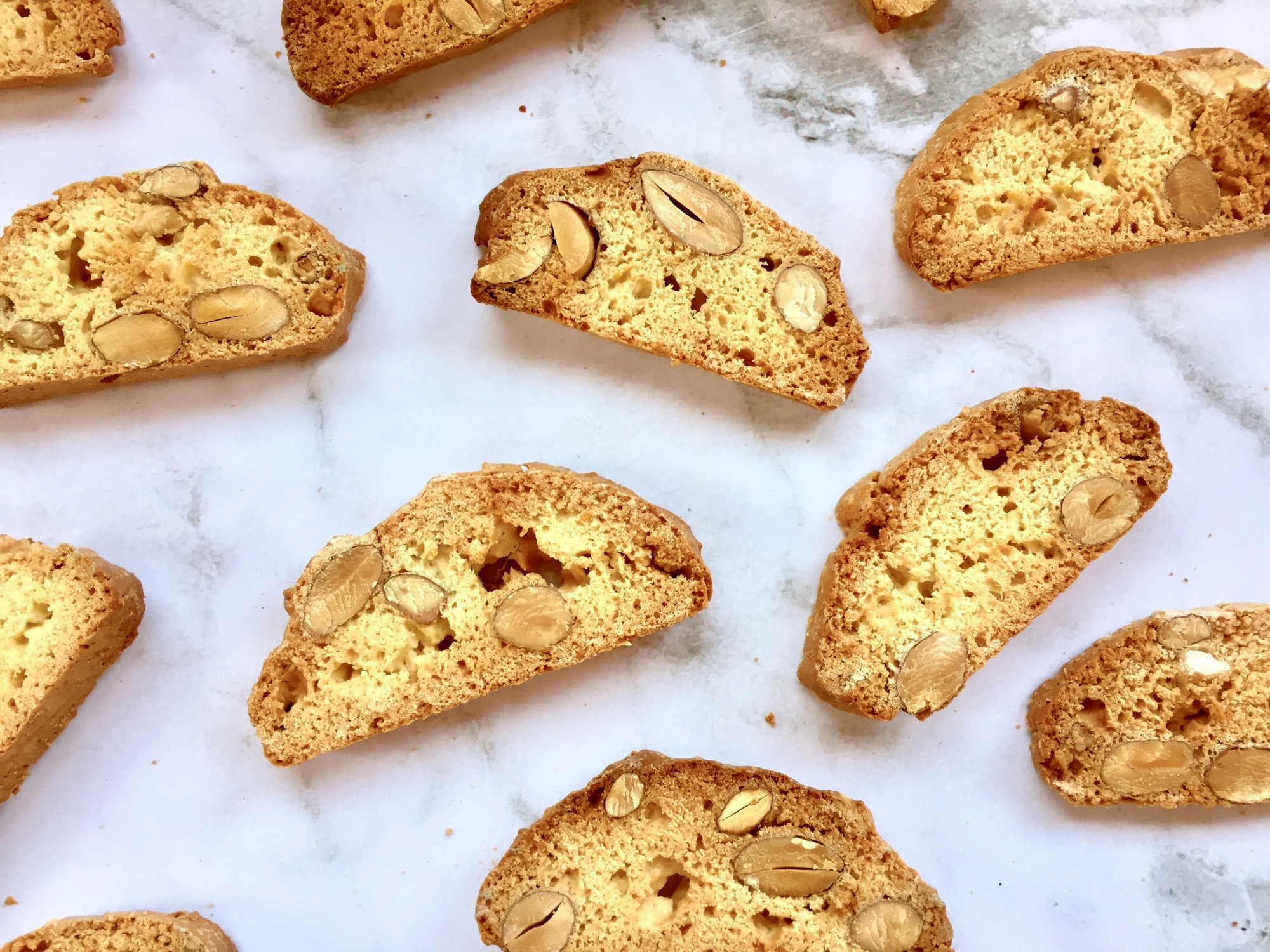Isn’t it funny how we appropriate names and words but don’t really understand what it means? I mean, biscotti is just the Italian word for biscuit, right? It certainly sounds like it! But that, dear friend, is where you would be wrong (to some extent). Strap in for a nerdy baking lesson.
Biscotti actually comes from the Latin word biscoctus meaning twice cooked (bis = twice, coctus/cotti = cook). And while it might refer to the general realm of cookies and biscuits today, that was not how the story of biscotti began. Biscotti is (was) a very specific word referring only to those things (generally breads and biscuits/cookies) that have been cooked twice, generally in the oven. Which also explains why sometimes you see other biscuits called biscotti, even though they don’t look like these biscotti. And the reason for the double-cooking was to improve shelf-life because biscotti was invented at such as a time when long journeys were a reasonably common aspect of life (the Roman era), and as such it was necessary to carry food with you along these journeys that would not quickly perish. Though, I’m sure back in the day they weren’t quite so delicious as they are now. I’m sure the original versions of biscotti didn’t have dried cranberries, white chocolate (or even milk chocolate for that matter!) or pistachios in them! That’s just our super fancy modern way of doing biscotti (noses in the air, everyone).
However, it does appear that these luxuries became a standard part of the biscotti recipe during the Renaissance (so, maybe we’re not that fancy, just really unimaginative? Who doesn’t change a recipe in 500 years?!). Apparently, by the end of the Renaissance (anyone want to start that debate? No? Good!) biscotti was being made with not only almonds, but lemon, amaretto, dried fruit and chocolate! So there’s nothing new under the sun, especially when it comes to biscotti! But this recipe today is a fairly basic recipe, without any fancy trimmings, just almonds. I’m not sure how old this recipe would be considered to be, but if the Tuscans were putting chocolate in their biscotti during the Renaissance, I think it’s pretty safe to say that this recipe could easily be 500 years old (and by that I mean modelled off a 500 year old recipe…I didn’t find it in a museum).
Ingredients
3 eggs, separated
pinch of salt
½ caster cup sugar
1 teaspoon vanilla extract
¾ cups roasted almonds, whole
1 ½ cups all purpose flour
Method
- Preheat oven to 180°C fan-forced and line a baking tray with baking paper.
- Whisk the egg whites and salt in the small bowl of an electric mixer until it forms stiff peaks. Set aside
- Beat the eggs yolks, sugar and vanilla in the bowl of electric mixer until pale and well combined.
- Gradually add the flour mixing well until the mixture looks like breadcrumbs. You may need to scrape down the sides of the bowl a few times, and if the mixture gets lumpy, stop using the electric mixer and switch to a wooden spoon, stirring rather fast until the lumps disappear.
- Add the almonds and mix to combine.
- Starting with half of the egg whites, stir carefully into the flour and nut mixture. Continue with the other half, folding until well incorporated.
- Divide dough in half, and with wet hands, shape each half into a flatish log and place onto the prepared tray.
- Bake for 15-20 minutes or until firm to the touch all over.
- Remove from the oven and allow to cool until they are cool enough to handle.
- Using a serrated knife, slice the logs about 3-5mm thick (or as thin as you can get them!)
- Place the biscuits back on the baking tray (you may need a second tray), and bake for another 10-15 minutes or until golden brown.
- Allow to cool completely before serving.
Happy Baking!
Notes
- Biscotti can be stored at room temperature in an airtight container for a few weeks.
- You can easily substitute other dried fruits and nuts for the almonds. Eg., cranberries, pistachios, hazelnuts etc.
- You could add the zest of 1 lemon or orange to the mixture at step 3.
References:

Let me grab a cup of coffee! ☕️
LikeLiked by 1 person
Great idea!
LikeLiked by 1 person
A cup of coffee or hot cocoa and these biscotti would be an amazing pair!
LikeLiked by 1 person
Oooh I must try that!
LikeLiked by 1 person